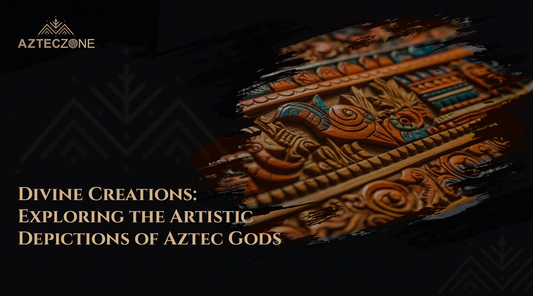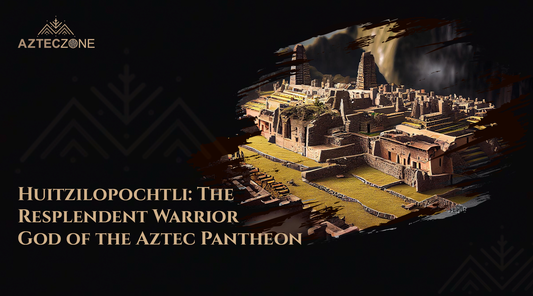Were those three words enough to chill us? Have you ever considered how terrifying it would be to be dead? What about the afterlife? Could you imagine what it sounds like in hell?
If you haven’t heard the sound of the Aztec Death Whistle yet, try playing it on music platforms that you know to hear its sound. I haven't been to hell (of course), but I do think it will sound like it.
Aztec Death Whistle
The Aztec Death Whistle, on the other hand, played a significant role in Aztec civilization and religion, particularly in their ritual performances. Before we get into this, let's go over some of their histories first and how this Aztec Death Whistle became a part of it.
Religion has always been an important part of our culture. It has already been the foundation of our daily lives since the beginning of time. It was only later that Christianity came to dominate the world we live in. For most of our history, religions other than Christianity have conquered the world around us. Greek religion, as well as Buddhism, had a strong influence on this, and we all have a basic understanding of its mythologies. However, this only applies to Europe and Asia.
Many religions stood their ground and conquered lands in the west simply by imposing their beliefs on people, or Tribes. If you have been listening to your World History class (if you had, of course), you may have heard about the Mayans or the Aztecs and their notable reputation.
AZTEC HISTORY
Around the 13th to 15th centuries, a nomadic tribe called the Aztecs took control of some parts of Mesoamerica by force, primarily the northern and central parts of Mexico. They are controversial due to their bad reputation for the rites they have performed to worship their gods. The majority of Nomadic Tribes are well-known for their human sacrifice rituals. The Mayans and Aztecs, however, had carried out the most heinous rituals.
If you've seen the movie Apocalypto, you'll have a good idea of how the Nomadic Tribes perform their rites. If not, and if you are curious, you may watch it; however, you must have a strong stomach.
Going back in time in Aztec history, not only the Aztecs but also some nomadic tribes' priests perform Human Sacrifice rites by cutting open the sacrificial victim's chest and removing their BEATING hearts to be offered to their gods, believing that their Sun god, Huitzilopochtli, is constantly in need of human blood to cross from east to west. They also believe that sharing one's heart is a great honor in exchange for a wonderful afterlife. We no longer see or hear about this practice these days, but in their time, sacrificing one human life was critical not only for the survival of their entire tribe but also to prevent the world from ending. ("I offer you my heart" was a romantic idiom, but after this, you might reconsider)Associated with their right to human sacrifice, are rumored to be what they call the Aztec Death Whistle.
THE AZTEC DEATH WHISTLE
Aztec Death Whistle is not a common whistle or musical instrument. Its sound may be the most terrifying thing you've ever heard, especially because it includes the sound of many screeching humans as if they were on fire. If we get to hear what the hell sounds like, I'm guessing it sounds a lot like the Aztec Death Whistle.
Archaeologists discovered a beheaded sacrificial victim in front of the Ehecatl at the Temple of Tlatelolco in 1999, holding two Aztec Death Whistles that are small and made out of ceramic in his hands. It was also stated that it has a threatening skull face that represents their death god named Mictlantecuhtli. This discovery led archeologists to believe that the Aztec Death Whistle was associated with mentioned Death god and their wind deity, Ehecatl.
People have a tendency to believe that Aztec Death Whistles were instruments of death. There is no actual evidence for this, but we do know that these Aztec Death Whistles were buried with the dead as a reminder of the dangers that awaited them on the four-year journey to the underworld, including hurricanes that could slice through you like an obsidian blade. As a result, some claim that the sound was not a human shriek, but rather an imitation of a very powerful wind.
WHERE IS THE AZTEC DEATH WHISTLE BEING USED
We don't know exactly what the whistle was used for; it could have been used as an intimidation tactic in war, or it could have been used to imitate the excruciating cries of the sacrificial victims while their beating hearts were taken out from their chests. Experts argue, however, that we don't know much about how the Aztecs used these strange instruments, how they played them, or how they sounded when played by Aztec Warriors or priests.However, according to a Music Archeologist named Arnd Adje Both, the Aztec Death Whistles do not produce the sound of screaming people in agony, but rather a slightly distorted wind sound, and because his statement was not accepted despite being the first person to play the two discovered Aztec Death Whistles back in 1999, he decided to do a thorough examination of the whistle and better understand its construction and structure. He discovered that the Mayans invented the two whistles, which have a bottom opening that can be cupped by the player's hand to produce the tone of the sound and allow them to distort its sound.
Many people describe the Aztec Death Whistle in various ways, especially since no one has documented it or seen where it was used. Someone may have attempted to play the discovered artifact, but the sound of the actual instrument has not yet been revealed to the public.
At the end of the day, we will be the ones to decide what sound we hear from the Death Whistle, and we will be the ones to decide what sound it truly makes. Let's hope it's not the same noise we heard on the internet.




